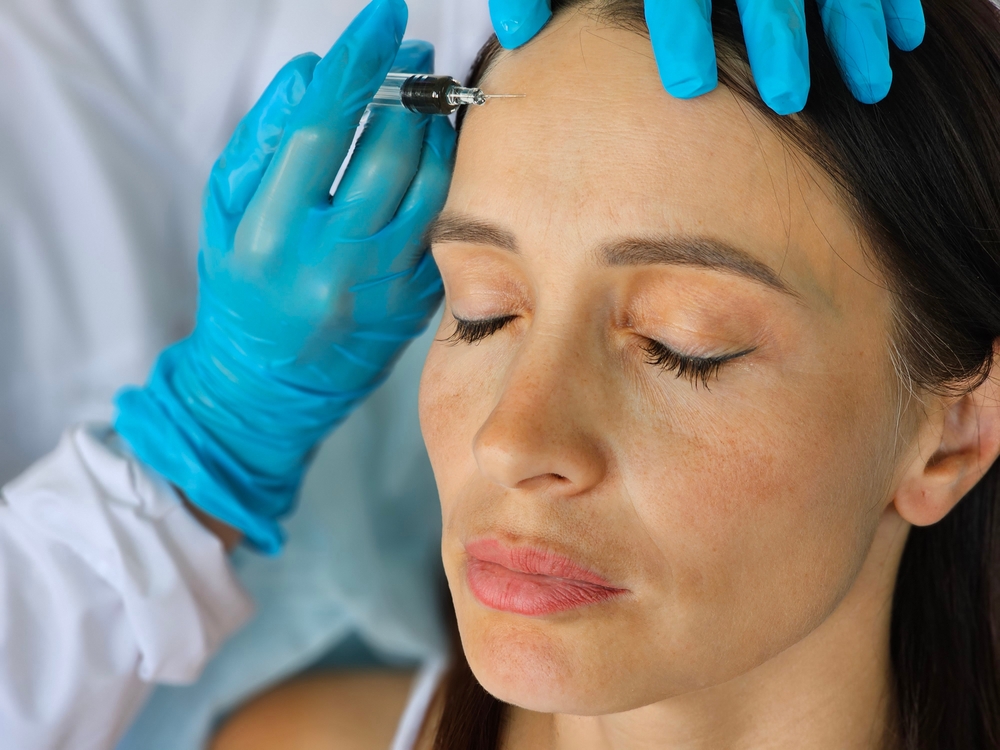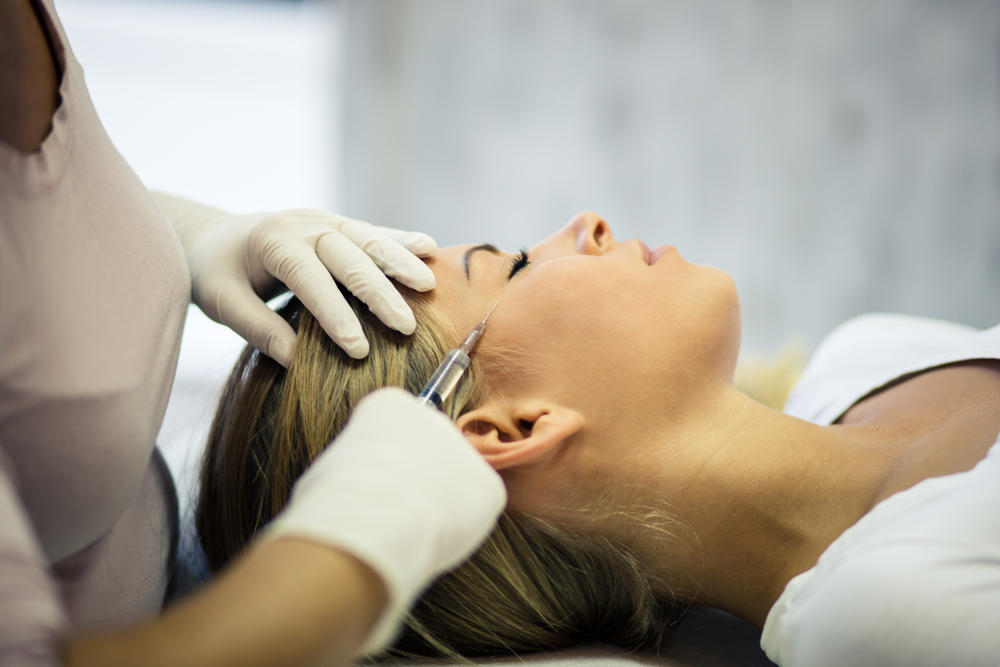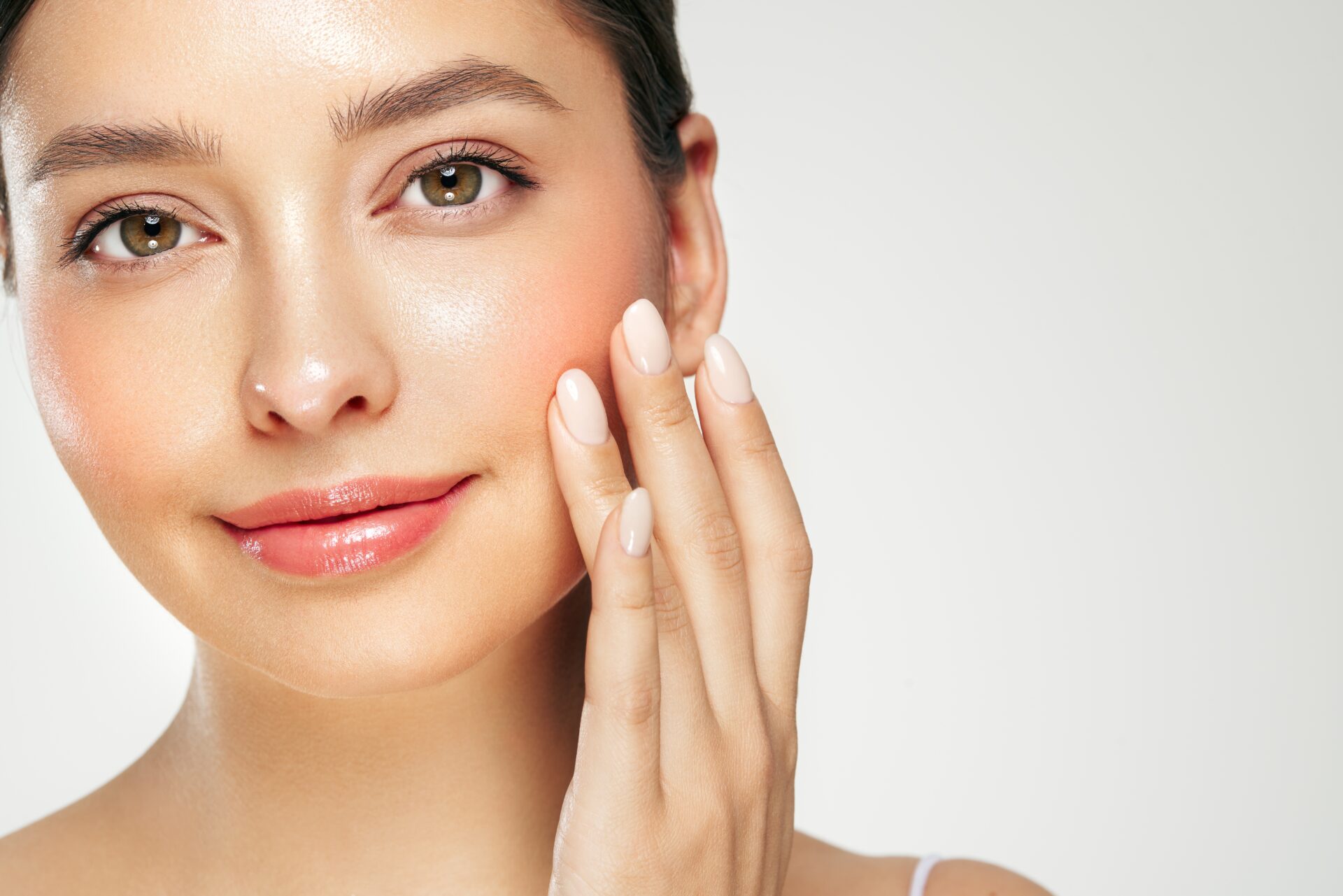Remember when your mom told you, “Don’t make that face or it will stay that way?” She was right. Lines of facial expression form from repetitive facial movements like frowning or lifting our eyebrows. As we age and our skin loses elasticity, these lines can be noticeable even at rest. That’s where Botox® comes in.
What Is Botox®?
Botox is a highly purified protein that causes muscle weakness. Doctors can inject tiny, controlled doses to temporarily weaken the muscles responsible for frown lines, forehead lines, and others, so the lines soften and, in some cases, disappear. Botox can also be used to weaken muscles that pull down areas of the face in to give a “lift.”
How Does Botox® Work?

Botox® works by interrupting communication between nerves and muscles. When injected into specific facial muscles, Botox® blocks the release of acetylcholine, a neurotransmitter.
Acetylcholine transmits nerve signals to specific muscles, telling them to contract. Over time, this repeated action leads to the appearance of wrinkles.
Blocking acetylcholine stops communication, weakening the muscles and making them relax, reducing unwanted lines and wrinkles. “Botox® is a versatile treatment that works by temporarily relaxing specific muscles, which can address various cosmetic and medical concerns,” says Jacqueline M. Calkin, MD, of Calkin Boudreaux, a Golden State Dermatology Affiliate in Sacramento.
Does Botox® Hurt?
The needles used for Botox® are very tiny. You may feel a slight pinching or a stinging sensation of the injection.
How Long Does Botox® Take to Work?
Botox’s® effects gradually manifest over several days to a week after the treatment. Final results are seen at two weeks.
Botox® lasts three to four months before maintenance injections are required. After that, the muscles resume movement, and wrinkles and lines return. To maintain the desired results, you’ll need regular follow-up Botox® injections.
How Safe Is Botox®?
Botox® is considered very safe and effective when administered by a skilled, licensed, and experienced healthcare provider. The treatment can lead to unwanted results if injected incorrectly. Possible but not worrisome side effects include bruising, pain, or minor swelling at the injection sites.
One of our experienced providers will determine the appropriate dosage and injection sites depending on your aesthetic goals and facial anatomy.
Where Is Botox® Used?
Frown Lines
Glabellar lines, commonly known as frown lines, are the vertical lines that develop between the eyebrows and are caused by the glabella muscles. Each time you squint or frown, the glabella muscles tug and pull the skin, creating frown lines over time.
Botox® weakens the glabella muscles, smoothing out the frown lines for a much more youthful look.
Crow’s Feet

Crow’s feet are the wrinkles and lines that form around the outer corner of the eyes. They appear due to the orbicularis oculi muscles that move when a person smiles, laughs, or squints.
Botox® can successfully minimize the appearance of crow’s feet by relaxing these muscles, providing a smoother, more youthful, and rejuvenated look.
Forehead Wrinkles
Overworked frontalis muscles elevate the eyebrows, causing forehead wrinkles. Botox® temporarily weakens the frontalis muscles, decreasing their movements. Limited muscle movement smooths forehead wrinkles, maximizing your skin’s beauty and youth.
Your doctor may not recommend this treatment if you have low eyebrows or hooded eyes.
Eyebrows
Botox® can be injected into the muscles that depress the eyebrows leading to a lifted, refreshed appearance.
Chin Dimples
Years of repetitive mentalis or chin muscle movements can create a dimpled, puckered chin. The skin’s texture worsens over time, and cross-hatched lines form, creating an orange-peel chin.
Botox® relaxes the mentalis muscles, diminishing chin wrinkles and restoring a smooth, firm appearance.
Lip Lines & Lip Flip
Lip lines, also called smokers’ or lipstick lines, are the vertical lines that appear on the lips with age. Frequent facial movements such as pouting, eating, laughing, and smiling contribute to developing lip lines.
With time, these expressions can deepen lines when you contract the orbicularis oris muscle that encircles the mouth. Lip lines are notoriously hard to conceal as they become more pronounced and can give you an aged look.
Botox® decreases the movement of the orbicularis oris muscle, smoothing away lip lines and helping you achieve a rejuvenated, refreshed appearance. It will also evert the upper lip, making lips look subtly fuller.
Neck Bands
Neck bands are the lines that run vertically down the neck. They can make the neck look older.
Botox® reduces platysma muscle movement. Consequently, this minimizes the appearance of neck bands, leaving the neck looking smooth and more youthful.
Jawline
Botox® targets the platysma muscles, partially responsible for an undefined jawline, temporarily relaxing them. The relaxation effect prevents the muscles from pulling down on the skin. This allows the muscles that pull up on the jawline to act unopposed leading to a firmer jawline and a more youthful contour to the lower face.
“Botox® can create subtle yet significant improvements in appearance. When administered correctly, it softens facial expressions, reducing the appearance of fine lines and wrinkles,” Dr. Jacqueline Calkin explains. “It can also provide a subtle but noticeable lift to brows and the jawline. The goal is to achieve a natural, refreshed look that enhances the patient’s features.”
Erase the Signs of Aging with Botox®
With Botox®, you can reduce the appearance of lines and wrinkles, feeling younger and more beautiful. Our customized approach to each Botox treatment can help you achieve your desired results.
Are you interested in Botox® and its benefits? Book your appointment at Duncan Dermatology and get on the path to radiant, younger-looking skin.



